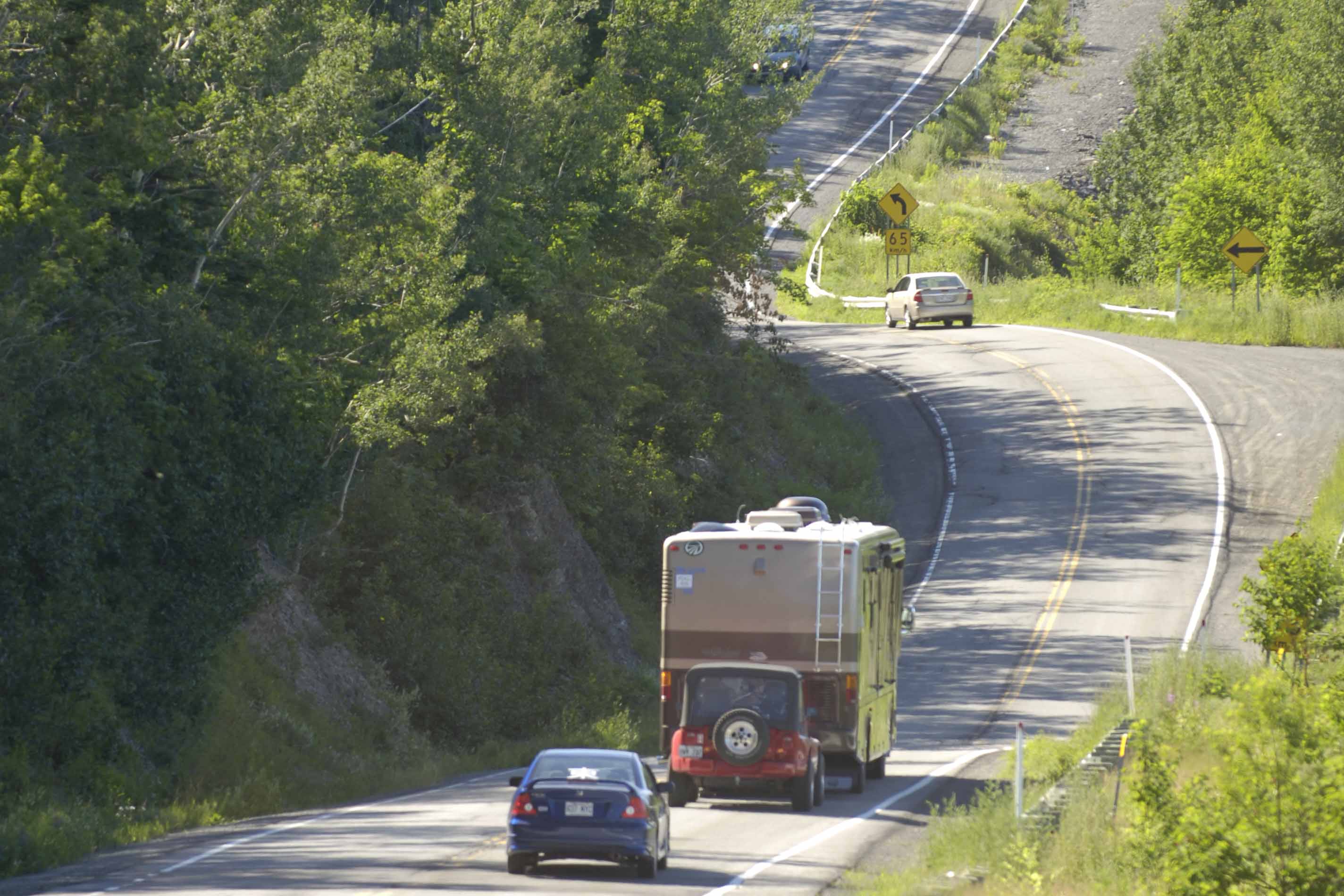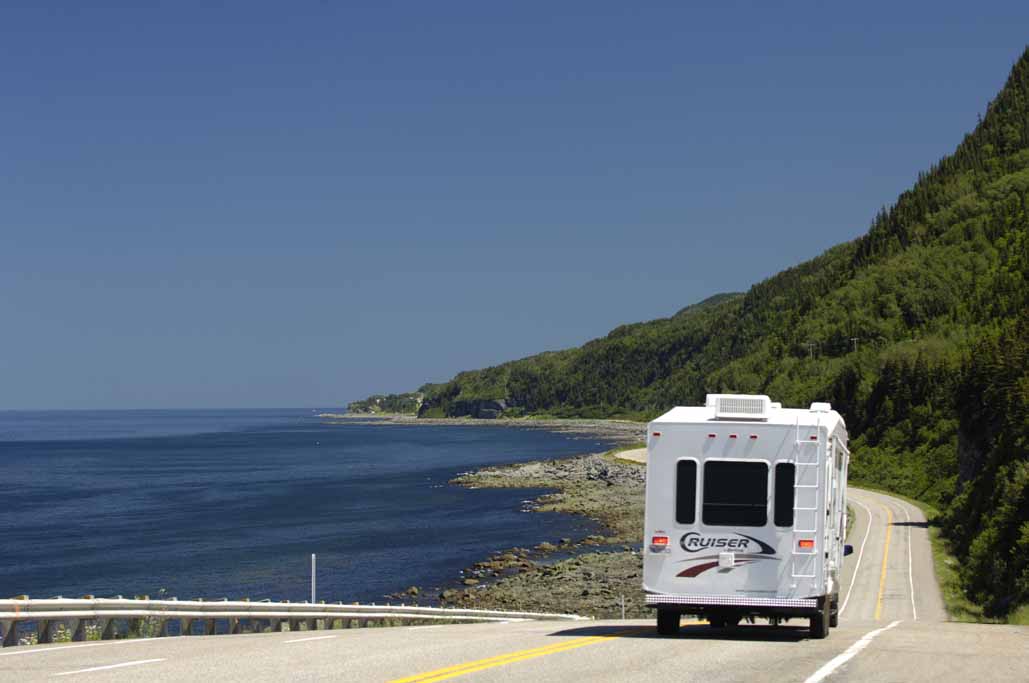June 17, 2025Escapade
Braking in an RV
April 22, 2021News
It might not seem like a big deal, but braking in an RV is a little more serious than just stepping on the brake pedal. The driver has to deal with more weight and much more complex parameters.
Several factors can affect the quality of braking: the total weight of the vehicle, its speed, the inclination and length of a hill, using an exhaust brake, the weight distribution across the axles, the distribution of braking forces and the road/tire friction coefficient.
Brake degradation is not noticeable during normal driving. However, in an emergency situation, when the brakes are applied to the maximum, you will quickly notice that your vehicle's braking capacity is not enough. This degradation can be caused by various small problems which together significantly decrease braking efficiency. Normal wear and tear, overheating of the linings, poor fit of the bands, leaky pads and, in the case of a towed RV (travel trailers), improper adjustment of the brake control will all have an impact on the vehicle's braking efficiency.
Travel Trailers
Lightweight RVs such as tent trailers or very light travel trailers are sometimes equipped with surge brakes. This is a master cylinder mounted on the boom, which is activated by the inertia of the RV when the towing vehicle brakes and engages a hydraulic brake circuit.
The vast majority of travel trailers are equipped with an electromechanical brake system. Slowing down the towing vehicle activates a control, which in turn transmits a current to the magnets; the activated magnet sticks to the vertical wall of the rotating drum and, using a lever system, pushes the brake pads onto the drum. This inexpensive and reasonably efficient technology dates back to the 1950s. However, for this system to function effectively, it requires some attention.

The control adjustment is quite delicate: too much, you'll lock the wheels when driving in cities. Not enough, and you won't have enough power when you're moving at high speed. By carefully following the manufacturer's instructions, you can reach a good compromise for most driving conditions.
The braking system of a towed RV does not adjust automatically. It should be adjusted once a year, at least. This should be carried out with careful attention on all four wheels. This will ensure an even distribution of the braking force. The adjusting components are in corrosive environment and need to be cleaned and lubricated. The trailer's brake electrics must be in perfect condition to ensure the brakes function properly.
More tire wear on one axle is often a sign that the brakes are not working on the other axle. Poor electrical contact will also decrease the braking system's performance.
A towed RV's brakes do not operate when stationary. This means they do not have a parking brake. Only the towing vehicle provides the parking brake function for the whole towing vehicle/RV assembly.
Chocks are required if you are parking on a steep slope. In reverse, the braking system will operate, but in a reduced capacity.
Engaging the lever on the brake control will help provide more force if needed.
Engine braking
Many people feel that engine braking is expensive. It is true that the cost of refurbishing an automatic transmission is quite a bit higher than the cost of refurbishing the brakes. However, careful use of engine braking (not overuse) could prevent you from finding yourself in dangerous situations caused by poor braking on long descents. It can avoid shifting down gears suddenly and throwing the engine into 5000rpm!
The following guidelines are suggested for shifting down gears on long descents:
-
Gradient of less than 3%: use brakes (and disengage the overdrive).
-
Gradient of 3 to 7%: use brakes and second gear.
-
Gradient of more than 7%: use brakes and first gear.
Short descents don't always require the use of engine braking, but this practice will help you maintain better control of your vehicle or combination. Road signs will tell you the gradient percentage of slopes and their length; this information isn't just for drivers of heavy goods vehicles.
It's also useful for RV drivers. A motorized vehicle or a combination of truck and trailer is often fully loaded and its brake system is used to the maximum during long descents. This signage forces heavy vehicles, and sometimes RVs, to stop before descending in order to check the condition of the brakes. Stopping means you will set off at a low speed, using engine braking. On long descents, it's a good idea to release the brake pedal periodically for a short time to allow the brakes to cool down. Using the air conditioner downhill will add to the load on the engine and will also help slow your vehicle.
Engine brake uses the engine as a compressor to provide more braking power. On rear-wheel drive diesel engines, this system is often mounted directly onto the motor and is activated either automatically or manually.
For drivers using a diesel truck as a towing vehicle, there are electromechanical systems available that are mounted onto the exhaust, and block exhaust gases to help with braking. These systems are a good investment for those who frequently travel with a trailer and who get the most out of their vehicle.

Towing a Car Behind Your RV
Motorhomes have a towing capacity of up to 5000lbs for gasoline models and more for some diesel models. Many chassis manufacturers only allow towing of a maximum of 1000 or 1500lbs without brakes. Above this weight, you must have an auxiliary braking system to activate the brakes of your towing system.
Several states in the United States have started to enforce the law regarding the maximum load you can tow without a brake. Travellers in hilly regions like Charlevoix will appreciate being able to increase their braking power. The same goes if you cross the mountains of Mexico, where your brakes are really put to the test. And if you go to Cap Jaseux in Saguenay, with its 20% descent gradient, any vehicle will have to use first gear…and if you have a big motorhome, just hope that you can get back up again!
This text is prepared by FQCC. FQCC members receive a 10% discount on their annual Terego subscription.













